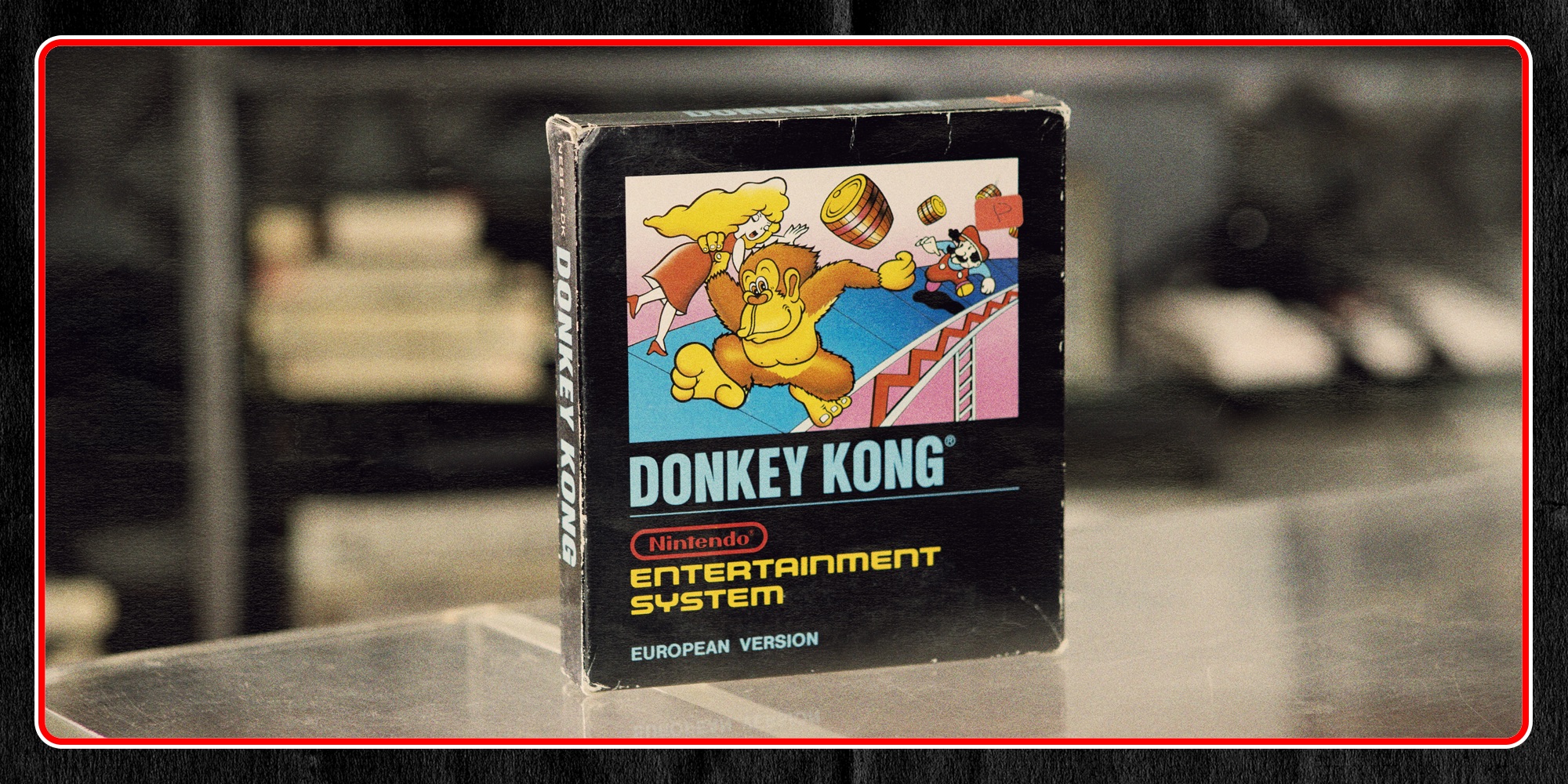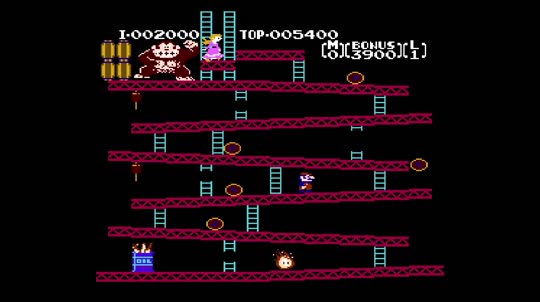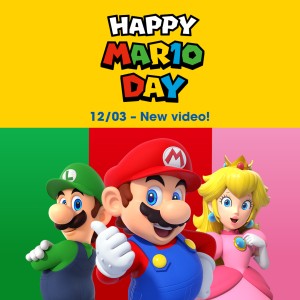Nintendo Classic Mini: NES special interview – Volume 1: Donkey Kong
04/11/2016


FamiConnichiwa, everyone! I’m Akinori Sao, a writer in Kyoto. Sorry for starting with such a silly remark, but that’s how happy I feel. After all, it has been 33 years since the birth of Famicom1, 13 years since production stopped, and now in 2016 this groundbreaking video game console is coming back to life in a big way in the form of Nintendo Classic Mini: Nintendo Entertainment System and Classic Mini Famicom*! I got my hands on the Classic Mini Famicom a little early and it was so much smaller than I imagined. I couldn’t help but remark on how cute it is!
1. Famicom: Family Computer. The NES is known as Famicom in Japan.
* In Europe, only Nintendo Classic Mini: Nintendo Entertainment System will be available.
To commemorate the release of Nintendo Classic Mini: Nintendo Entertainment System and Classic Mini Famicom, I will be interviewing the developers of several Nintendo titles. The topic for the first instalment is Donkey Kong, and my interviewee is Representative Director and Creative Fellow Shigeru Miyamoto.
A few years ago, Miyamoto-san revealed a great deal of behind-the-scenes information regarding the development of Donkey Kong – such as why Mario jumps and why he wears overalls – in Volume 1 of the Iwata Asks interviews covering New Super Mario Bros. Wii. If you’re interested, check out that interview as well.
Miyamoto-san, I look forward to our discussion.

Volume 1: Donkey Kong
Starting with the Bare Circuit Board
Sao: The Classic Mini NES and Classic Mini Famicom are adorable!
Miyamoto: Thank you. They’re small, so you want to hold them in your palm.

Sao: Yeah. (laughs) But the official Japanese name of Nintendo Classic Mini Family Computer, and Europe’s Nintendo Classic Mini: Nintendo Entertainment System, sound a little long. (laughs)
Miyamoto: I say their names in their shorter format. We call the Japanese version the Classic Mini Famicom and the overseas version the Classic Mini NES.
Sao: Were you involved in the planning and development?
Miyamoto: I wasn’t directly involved, but I checked in on it several times during development. The first time I saw it, it was just a bare circuit board.
Sao: A bare circuit board? So at first it wasn’t going to take the form of a Famicom or NES?
Miyamoto: Right. The idea was a single circuit board that would allow people to play dozens of NES games, but we wondered if that was worth doing at that point in time.
Sao: After all, you can play NES games on Wii U and Nintendo 3DS family systems via the Virtual Console.
Miyamoto: Yes. This project began at NERD2 in France, and we thought that if we were going to release it, it might be a good idea to recreate the appearance of the NES as a perk for fans.
2. NERD: Nintendo European Research and Development. A subsidiary developer in Paris.
Sao: I see.
Miyamoto: When a sample of the Classic Mini NES was ready, the sales team in Japan saw it and voiced their desire for a mini Famicom as well.
Sao: I understand how they felt! (laughs)
Miyamoto: Yeah. (laughs) In turning it into a product, we thought it would be beneficial for internal presentations to have a prototype Famicom too, and I just happened to have an alarm clock in my room that looked like a Famicom. It’s quite an old licensed product and the plastic had turned all yellow (laughs)
Sao: Oh! (laughs)
Miyamoto: It was smaller than what we originally envisioned, but the staff developing the Classic Mini Famicom wanted to borrow it, so I handed it over. They were using that yellowed Famicom for presentations for a while.
Sao: So looking at that yellowing Famicom led to the official decision to make this product.
Miyamoto: That’s right. After some time had passed, the actual Classic Mini Famicom was ready. As I mentioned earlier, you can play Famicom/NES games on Virtual Console, but even if you don’t have a Wii U or a Nintendo 3DS, you can still play them by simply plugging a Classic Mini Famicom or Classic Mini NES into your TV. I think we made a cute product that will bring back memories.
The First Seven Famicom Games
Sao: Now I’d like to ask about Donkey Kong, which was released simultaneously with the Famicom. As of this year, it has been 35 years since the arcade game.
Miyamoto: Now that you mention it… (laughs)

Sao: The arcade game appeared, and then two years later the Famicom version came out in Japan. Were you involved with converting the game for the Famicom/NES?
Miyamoto: No. As with Mario Bros.3, I left the conversion from the arcade game to the Famicom to another team. In order to launch the Famicom, I was working on a software line-up.
3. Mario Bros.: A platform game released in arcades and for the NES system. Originally released in Japan in 1983, and in Europe in 1986.
Sao: Donkey Kong, Donkey Kong Jr. and Popeye4 appeared simultaneously with the Famicom system.
4. Donkey Kong Jr. and Popeye: Arcade games that appeared in 1982.
Miyamoto: Yes, but I wanted to make seven titles that would release early in the Famicom’s career. We were touting the system to use replaceable game cartridges, so we felt it would make the Famicom look bad if we released it with a small number of games.
Sao: I suppose so. (laughs)
Miyamoto: I definitely wanted to make Baseball5, and I was also involved in games like Tennis and Golf.6
5. Baseball: A sports game released for the NES system. Originally released in Japan in December 1983, and in Europe in September 1986.
6. Tennis and Golf: Sports games released for the NES system. Originally released in Japan in January 1984 and May 1984, and in Europe in September 1986 and November 1986, respectively.
Sao: But you weren’t involved with 100 percent of the initial Famicom/NES titles, were you?
Miyamoto: No, but I was directly involved with character and game design for about 80 percent.
Sao: Oh, uh-huh.
Miyamoto: When it comes to hardware, we could only use 64 colours for the Famicom/NES, so I was also involved in design decisions such as which colours to use for each game.
Made to Sell in America
Sao: Let’s return to Donkey Kong. I heard that when you were making the arcade game, you cut ties with friends in order to concentrate on development.
Miyamoto: Well, it wasn’t that extreme. (laughs) But I did make a point of phoning a few friends to tell them that I probably wouldn’t be in touch for two or three months.
Sao: Did you make Donkey Kong in two or three months?
Miyamoto: Back then, we made games in three months. But Donkey Kong took a little longer – four or five months, I think.
Sao: That’s still fast. During that time, were you immersed in development?
Miyamoto: The company housing I was living in at the time was nearby across the river. So every day I was just going back and forth between work and home. Also, it was nice that the company had a bath.
Sao: There was a bath at Nintendo?
Miyamoto: Yes. The head office back then was in Toba-kaido, and there was also a factory for making Japanese playing cards. You need a boiler to make playing cards, so we used water boiled there for the adjoining bath facility as well. The people who worked at the card factory would clean themselves up in the bath after work. No one was there at night, so I could use it at my leisure.
Sao: Thanks to that bath, you didn’t have to smell all sweaty. (laughs)
Miyamoto: Right. It was a lifesaver. And it was effective in making time for gathering my ideas. (laughs)
Sao: What did you pay the most attention to in the development of Donkey Kong?
Miyamoto: It was important to us that we make it to sell in America.
Sao: The reason you decided to develop Donkey Kong was that tons of arcade games released in America were left unsold and you wanted to do something about that.
Miyamoto: (laughs) Tons. But we could make a new game, insert the program, and use the same circuit board and cabinet. When we develop a product today, we talk about the importance of globalism and thinking worldwide, right?
Sao: Yes.
Miyamoto: But without even making a special case about it, it just happened naturally.
Sao: You made it to sell in America, so you were already thinking globally at that stage.
Miyamoto: Exactly. Ever since Donkey Kong, we make products in Japan but aim for the enjoyment of Japanese players and Americans, Europeans, and people all over the world as we pursue our creative endeavours.
Sao: In other words, it was significant for you that the first Donkey Kong game you made was geared toward America.
Miyamoto: That’s right. Donkey Kong was my departure point for a global outlook. Since then, we have gradually broadened our scope, so now when Mario shows up suddenly in the Olympic Games closing ceremony, people from all over the world recognise him.
The Lady Yells “Kelp”?
Sao: By the way, in order to make Mario in Donkey Kong without using too many pixels, you gave him a moustache and hat.
Miyamoto: Yes.
Sao: You didn’t hesitate to make the hero a middle-aged guy with a moustache?
Miyamoto: To me, he isn’t middle-aged, he’s a young man, maybe 24 or 26 years old. The story is about Mario’s pet, Donkey Kong, kidnapping and escaping with his girlfriend, so he’d likely be a young man, and unmarried. But people often say he’s older, with some saying he looks about 40. (laughs)

Sao: (laughs) There was also a time when Mario was called Mr Video and Jumpman.
Miyamoto: That’s right. The landlord of storage and company housing for NOA (Nintendo of America) was named Mario, and the character looked like him, so that’s how he got that name.
Sao: Since you were making a game geared toward America, it was necessary to value NOA’s input.
Miyamoto: Yes. I tried to hear as many opinions as possible. But not everything was like that. For example, we wanted to give the game a name that would suggest a silly gorilla, so we called it Donkey Kong. Donkey is the name of an animal, but looking it up in the dictionary, we found it can also mean someone stupid. So we suggested that to NOA, and they said no. They said donkey just didn’t say “stupid” to them.
Sao: Even though it was in the dictionary. (laughs)
Miyamoto: Strange, isn’t it? (laughs) They said it didn’t make sense, but it makes an impression, so I decided to push through the name Donkey Kong. One year later, everyone was using that without a second thought, so I figured any name is okay because people get used to it. Anyway, I realised that impact is important, and that’s something else that Donkey Kong taught me.
Sao: So you geared the game for America. What other stories do you recall?
Miyamoto: At first, the lady that Donkey Kong kidnaps was shouting, “Help!”
Sao: She talked?
Miyamoto: She yelled, “Help! Help!” and when Mario executed a good jump, she would praise him by saying, “Nice!” However, some in the company were worried the pronunciation might be off, so we had a native English speaker who was an English conversation teacher listen to it, and that person thought she was talking about seaweed.
Sao: Seaweed? Like in the ocean?
Miyamoto: Yeah. It sounded like “kelp.”
Sao: Oh, I get it! (laughs) “Help” sounded like “kelp”.
Miyamoto: We couldn’t change the pronunciation at that point, so we stopped her from talking and changed “Help!” to Donkey Kong growling7 and “Nice!” to deedle-lee-deet-deet♪! The blip sounds were a great success.
7. Donkey Kong’s growls were cut when the game was converted to the Famicom and NES.
Sao: Why was that?
Miyamoto: Because the blip sounds would be catchy when someone was walking past the front of an amusement arcade.
Sao: It’s a fun sound, so it will draw in customers.
Miyamoto: Exactly. What we were attempting with voices didn’t work, but in the end it was good. Because of this experience, thinking highly about sound effects became engraved as one of the key elements of my creative process.
Sao: In other words, Donkey Kong was important as an origin of your creative style.
Miyamoto: Yes, that’s right.
“This Might Be a Hit”
Sao: So you made Donkey Kong and it became a big hit. When did you begin to sense some progress?
Miyamoto: During testing. The testers at the plant in Uji would keep playing Donkey Kong after work hours and wouldn’t go home. (laughs)
Sao: The testers were excited about it too.
Miyamoto: Yes. At the time, we would test using the table type arcade cabinet, and the joystick would slip from the testers’ hands when they played fun games. Right in the middle of gameplay – slip! (laughs) That happened a lot during shooting games, and it did while playing Donkey Kong, too. Watching that, I thought, “Oh, this might be a hit.”
Sao: You have often said that you can tell a fun game by watching the players from behind.
Miyamoto: It’s true. Your body moves a lot when you’re playing a fun game. The feedback at that time became a sort of standard for me, and when we made Super Mario Bros.8, the response from the testers was extremely similar to when we made Donkey Kong, so I said to Takashi Tezuka, “Something incredible might happen.”
8. Super Mario Bros.: A platform game released for the NES system. Originally released in Japan in September 1985, and in Europe in May 1987.
Sao: Then Donkey Kong was converted for the Famicom/NES. As someone who had made the original, how did you feel when you tried that out?
Miyamoto: It felt stretched sideways.
Sao: (laughs) The arcade game’s screen was more vertical, while a television’s is more horizontal.
Miyamoto: Yes. I also noticed a big difference in the number of colours in Donkey Kong. The arcade version used four colours, but the Famicom/NES only used three.
Sao: Why did four become three?
Miyamoto: For the arcade version, we combined two three-colour panels, but that wasn’t technologically possible with the Famicom/NES. That was really too bad. When Donkey Kong’s hand moves to his chest, the colours overlap and you can’t see it.
Sao: Oh, uh-huh…
Miyamoto: But it was incredible enough that an arcade game became a home game.
Sao: Absolutely. By the way… (looking at Donkey Kong visuals on a screen) the Classic Mini NES and Classic Mini Famicom system’s visuals are stunning.
Miyamoto: Yeah. On the Classic Mini NES and Classic Mini Famicom, you can choose from among three Display modes.9 In Pixel Perfect, it’s crystal clear, so much so that even I was surprised. We did a fine job rendering those characters back in the day. (laughs)
9. The mode called 4:3 uses the standard NES screen ratio of 4:3, while Pixel Perfect shows each pixel as a perfect square, and CRT recreates the look of old TV screens.
Sao: (laughs) Now for my last question. 35 years after the completion of Donkey Kong, how do you hope players will enjoy it?
Miyamoto: Compared to games today, it might feel rather stiff…or restricted. You can’t move smoothly as you may be used to nowadays.

Sao: There aren’t as many transitions in the animation.
Miyamoto: So it feels different compared to recent games. But the strategy and so forth is easy to grasp, so I hope people will try it out.
Sao: Donkey Kong was a groundbreaking game – the first in which Mario jumped.
Miyamoto: Yes. However, we were serious about making it. You know how your ankle twists when you fall from a place higher than your own height?
Sao: Right! (laughs)
Miyamoto: For that reason, we made it so that Mario loses a life if he falls from a height 1.5 times his own height. But we thought that might be too strict when we made Mario Bros., and now he’s fine falling from five times his height!
Sao: It wouldn’t be much of a game if Mario’s feet gave out every time he jumped! (laughs)
Miyamoto: But if he falls one level in Donkey Kong, he loses a life. So I hope people will also have fun with the things we were so serious about.
Please look forward to Volume 2 of this interview series, which will be all about NES classic Balloon Fight!
Nintendo Classic Mini: Nintendo Entertainment System will be released on November 11th.





